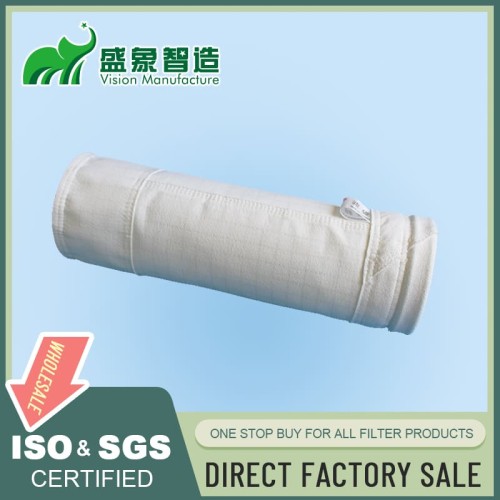
How Do Cement Plant Dust Collectors Enhance Air Quality and Operational Efficiency?
I. Introduction
Dust collection is a critical component in cement production, not only for maintaining air quality but also for ensuring operational efficiency and compliance with environmental regulations. This article provides an overview of the various dust collector systems used in cement plants and their impact on environmental compliance and worker safety.
II. Types of Dust Collectors Used in Cement Plants
- Baghouse Filters: Utilize fabric or felt bags to capture dust particles. They are widely used due to their efficiency and ability to handle high dust loads.
- Electrostatic Precipitators: Use electrical charges to attract and trap dust particles. Suitable for large volume handling.
- Cyclone Separators: Use centrifugal force to remove dust from the air stream. Effective for larger particle dust.
- Hybrid Systems: Combine features of the above systems to optimize dust removal and handle various particle sizes and concentrations.
III. Key Components of Cement Plant Dust Collectors
- Filter Media (bags, cartridges, plates): Essential for capturing particulates. The choice of media affects the efficiency and maintenance needs.
- Cleaning Mechanisms: Include pulse-jet, reverse air, or mechanical shaking systems that clean the filters to maintain airflow and efficiency.
- Fans and Blowers: Responsible for moving the air through the system, ensuring that all emissions are properly captured.
- Ductwork and Hoppers: Channel dust-laden air to the collectors and store the collected dust for disposal.
- Control Systems: Automate the operation and monitoring of the dust collection system, optimizing performance and energy usage.
IV. Applications Within Cement Plants
- Raw Material Handling and Storage: Controls dust generated during the handling and storage of raw materials.
- Clinker Production Areas: Captures emissions from the clinker production process, which is a significant source of particulate matter.
- Finish Grinding and Cement Silos: Ensures that the final grinding operations do not release cement dust into the environment.
- Packing and Loading Zones: Reduces dust emissions during the packaging and loading of finished cement products.
- Conveyor Transfer Points: Minimizes dust generation at transfer points within the conveyor systems.
V. Design Considerations
- Dust Characteristics in Cement Production: Understanding the properties of the dust, including abrasiveness and chemical composition, is crucial for selecting the appropriate dust collector.
- Temperature and Moisture Conditions: Dust collectors must be designed to handle the high temperatures and potential moisture content found in cement plants.
- Airflow and Volume Requirements: Systems must be capable of handling the large volumes of air required for cement manufacturing processes.
- Space Constraints and Plant Layout: Dust collectors should be designed to fit within the existing plant layout without obstructing production operations.
- Regulatory Compliance Needs: Systems must meet local and international standards for emissions and workplace safety.
VI. Performance Factors
- Collection Efficiency: High-efficiency systems are necessary to meet stringent emission standards.
- Pressure Drop Management: Systems should be designed to minimize pressure drops to reduce energy consumption.
- Energy Consumption: Efficient systems reduce operational costs by using less energy.
- Emission Rates: Must be within regulatory limits to ensure environmental compliance.
- Reliability and Uptime: Systems should be robust to minimize downtime and maintain continuous production.
VII. Installation Process
- Site Preparation and Foundation Work: Proper site preparation is crucial for the stability and performance of dust collectors.
- Equipment Assembly and Mounting: Ensures that all components are correctly installed and secured.
- Ductwork Installation: Properly installed ductwork is essential for effective dust capture and transport.
- Electrical and Control System Integration: Integrating control systems for automated operation and monitoring.
- Commissioning and Testing: Ensures that the system is operating correctly and efficiently before full-scale operation.
VIII. Maintenance and Monitoring
- Regular Inspection Routines: Scheduled inspections help to identify and rectify issues before they lead to system failures.
- Cleaning and Replacement of Filter Media: Regular cleaning extends the life of filter media and maintains system efficiency.
- Performance Monitoring Techniques: Ongoing monitoring helps optimize performance and detect anomalies.
- Predictive Maintenance Strategies: Advanced strategies can predict failures and schedule maintenance to minimize downtime.
IX. Environmental and Safety Benefits
- Reduction of Particulate Emissions: Significantly lowers the amount of dust released into the environment.
- Improved Air Quality in and Around Cement Plants: Enhances the quality of air, benefiting plant workers and surrounding communities.
- Enhanced Worker Safety: Reduces the risk of respiratory issues and other health problems associated with dust exposure.
- Material Recovery and Recycling Potential: Some systems allow for the recovery of dust for recycling, reducing waste.
X. Regulatory Compliance
- Emission Standards for Cement Industry: Systems must meet specific emission standards to comply with environmental regulations.
- Workplace Safety Regulations: Ensures that the systems contribute to a safe working environment.
- Environmental Protection Guidelines: Adherence to guidelines helps cement plants minimize their environmental impact.
- Reporting and Documentation Requirements: Compliance requires accurate reporting and documentation of emissions and system performance.
XI. Cost Considerations
- Initial Investment Analysis: Evaluates the upfront costs associated with purchasing and installing dust collection systems.
- Operational Costs (energy, maintenance): Ongoing costs must be managed to ensure the system remains cost-effective.
- Potential Savings from Material Recovery: Systems that allow for material recovery can provide additional cost savings.
- ROI and Payback Period Calculations: Helps justify the investment by showing the financial benefits over time.
XII. Case Studies and Success Stories
Examples from various cement plants demonstrate how advanced dust collection systems have improved air quality, enhanced operational efficiency, and ensured compliance with environmental standards.
XIII. Conclusion
Cement plant dust collectors are essential for maintaining air quality and operational efficiency. With advancements in technology and a focus on environmental compliance, these systems play a crucial role in modern cement production facilities.
Leave a comment

